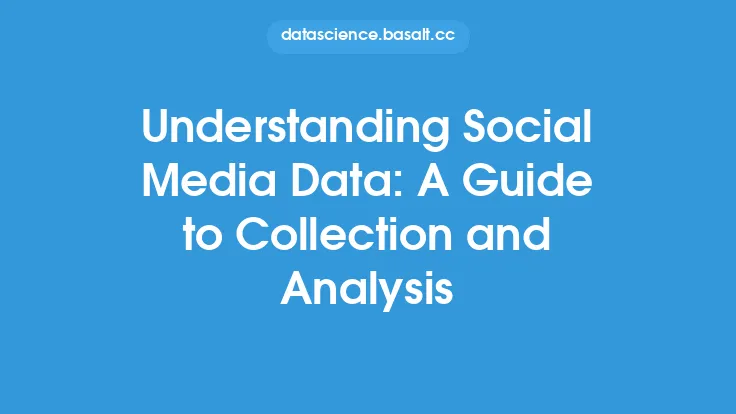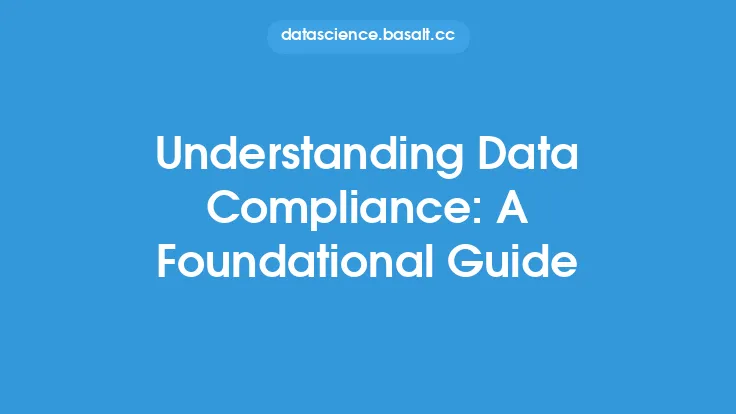Data privacy is a fundamental concept in the realm of data governance, referring to the practices and regulations that ensure the proper handling, storage, and protection of personal and sensitive information. As the world becomes increasingly digital, the importance of data privacy has grown exponentially, with individuals, organizations, and governments recognizing the need to safeguard against unauthorized access, misuse, and exploitation of personal data. In this article, we will delve into the foundational aspects of data privacy, exploring its key principles, concepts, and technologies that underpin this critical aspect of data governance.
Introduction to Data Privacy Principles
Data privacy is built upon a set of core principles that guide the collection, processing, and dissemination of personal information. These principles are designed to ensure that individuals' rights are respected and that their data is handled in a responsible and secure manner. The key principles of data privacy include:
- Transparency: Organizations must be clear about what data they collect, how it is used, and with whom it is shared.
- Consent: Individuals must provide informed consent for the collection and use of their personal data.
- Minimization: Only the minimum amount of data necessary for the intended purpose should be collected.
- Accuracy: Personal data must be accurate and up-to-date.
- Storage Limitation: Data should not be kept for longer than necessary.
- Integrity and Confidentiality: Data must be processed securely, ensuring its confidentiality, integrity, and availability.
- Accountability: Organizations are responsible for ensuring these principles are upheld.
Understanding Personal and Sensitive Data
Personal data refers to any information that can be used to identify a living individual, either directly or indirectly. This includes names, addresses, identification numbers, and even online identifiers like IP addresses and cookies. Sensitive data, a subset of personal data, includes information about an individual's racial or ethnic origin, political opinions, religious beliefs, trade union membership, genetic data, biometric data, health, sex life, or sexual orientation. The handling of sensitive data is subject to stricter regulations due to its potential to cause significant harm if mishandled.
Data Privacy Regulations and Laws
Various countries and regions have enacted data privacy laws and regulations to protect individuals' rights. The General Data Protection Regulation (GDPR) in the European Union is one of the most comprehensive and influential data protection regulations globally. It sets a high standard for consent, provides individuals with significant rights over their data, and imposes substantial fines for non-compliance. Other notable regulations include the California Consumer Privacy Act (CCPA) in the United States, the Personal Information Protection and Electronic Documents Act (PIPEDA) in Canada, and the Data Protection Act 2018 in the United Kingdom. These laws often require organizations to implement robust data protection policies, conduct data protection impact assessments, and appoint data protection officers.
Technical Measures for Data Privacy
Implementing technical measures is crucial for ensuring data privacy. Encryption, for example, protects data both in transit and at rest, making it unreadable to unauthorized parties. Access controls, including multi-factor authentication and role-based access, limit who can access personal data. Anonymization and pseudonymization techniques can reduce the risk of identifying individuals from the data, although they must be applied carefully to ensure they are effective. Data loss prevention tools can detect and prevent sensitive data from being transmitted or leaked outside the organization. Regular security audits and penetration testing help identify vulnerabilities that could be exploited to breach data privacy.
Organizational Practices for Data Privacy
Organizations play a critical role in upholding data privacy. This involves adopting a privacy-by-design approach, where data protection is integrated into the development of systems, services, and processes from the outset. Conducting privacy impact assessments for new projects helps identify potential privacy risks and implement mitigations. Training employees on data privacy best practices and ensuring there are clear policies and procedures for handling personal data are also essential. Appointing a data protection officer (DPO) can help oversee data protection strategies and ensure compliance with relevant regulations.
Challenges in Data Privacy
Despite the importance of data privacy, several challenges exist. The rapid evolution of technology, including the Internet of Things (IoT), artificial intelligence (AI), and cloud computing, introduces new risks and complexities in data protection. Ensuring cross-border data transfers comply with various national and international regulations can be particularly challenging. The balance between data privacy and the need for data to drive business innovation and public policy decisions is also a significant challenge. Furthermore, educating individuals about their data privacy rights and the steps they can take to protect their personal information remains an ongoing task.
Conclusion
Data privacy is a multifaceted and evolving field that is critical in today's digital age. Understanding its principles, regulations, and technical measures is essential for both individuals and organizations. As technology advances and data becomes increasingly integral to our lives, the importance of safeguarding personal and sensitive information will only continue to grow. By prioritizing data privacy and adopting robust data governance practices, we can build trust, protect rights, and ensure that the benefits of data-driven innovations are realized while minimizing their risks.





